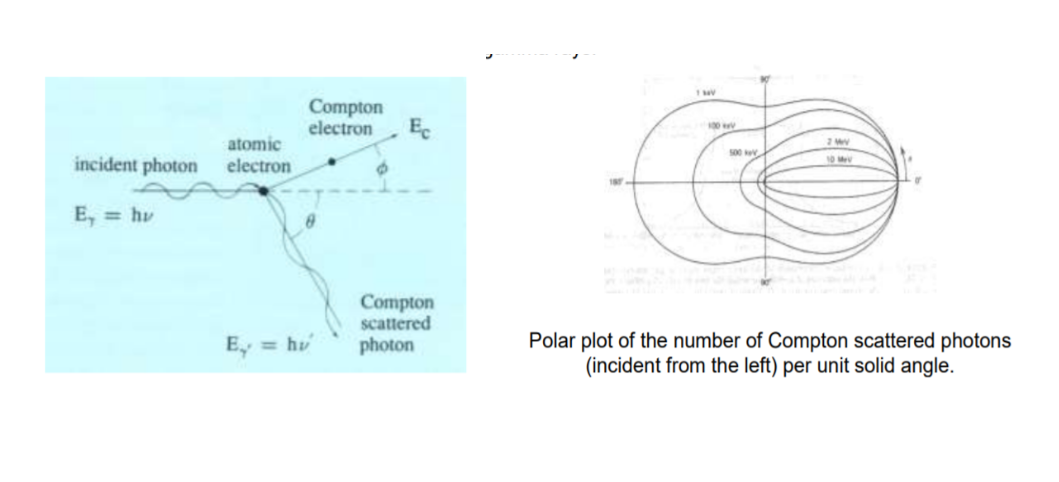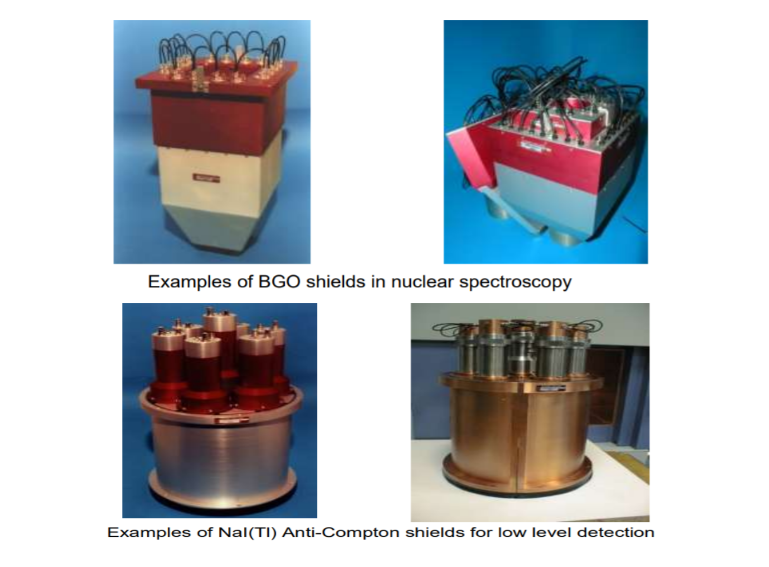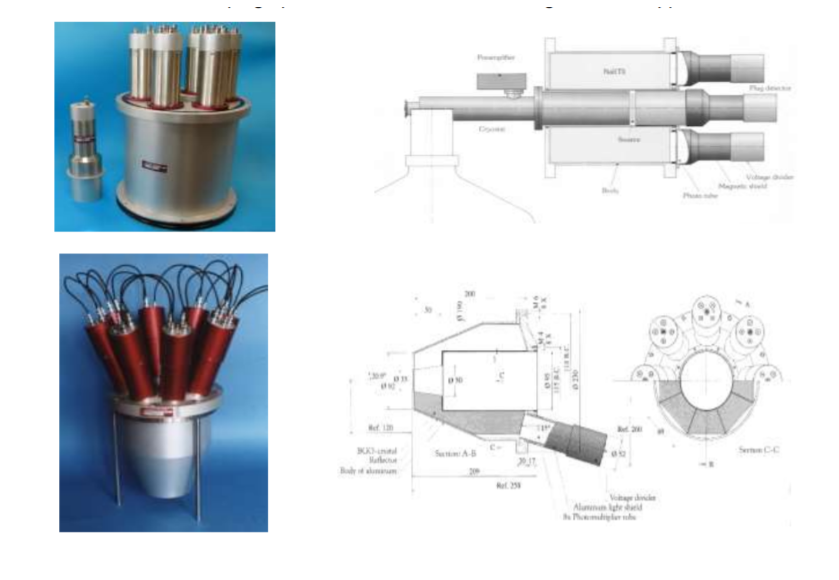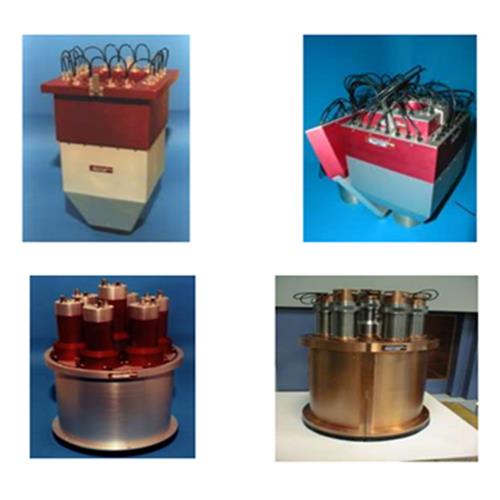In gamma ray spectrometry performed with High-purity Germanium detectors (HpGe), the detection of low intensity gamma ray lines is complicated by the presence of Compton scattered gamma rays of higher energy. At energies above a few hundred keV, the main interaction in the relatively low Z High-purity Germanium (HpGe) crystal is via Compton interaction. The Compton scattered gamma rays give rise to a continuous background in the gamma-ray spectrum which consequently raises the detection limit for lines at low energies.
A way to suppress these Compton scattered gamma rays is to surround the HpGe crystal with a scintillation material. When Compton scattered gamma rays escape from the HpGe detector and are absorbed and detected in this so-called Compton Suppression shield, they are in time coincident with the gamma photon detected in the HpGe crystal. When one observes coincident signals in HpGe detector and Compton suppression shield, a veto signal can be set to block the registration of the Compton interaction event. This technique is called Compton suppression spectrometry. The detector with which this is done is called an “Anti-Compton Shield” or “Compton Suppression Shield” For a good suppression it is essential that a wide range in energy of scattered photons is detected in the suppression shield. These energies depend on : · The maximum primary gamma ray energy · The radiation transmission of the HpGe housing · The absorption efficiency of the suppression detector. · The direction of the primary incident gamma ray For an optimum suppression, the suppression shield should be capable of detecting real low energy gamma rays down to 15 keV.

Applications
Compton suppression spectroscopy is mainly used in two fields: Nuclear spectroscopy and Low level detection.
Nuclear spectroscopy
In this application the primary gamma ray energies can be large, up to 8 or 10 MeV sometimes and the count rates can be considerable (of the order of 30 kHz). These experiments are done with beams and often it is required to stack HpGe detectors and surrounding shields to form 2 pi or 4 pi geometries. This implies that it is desired to use a relatively high density scintillator for the suppression shield in order to optimize the detection efficiency of the HpGe array. Examples of such experiments are mainly found in physics: Euroball, Exogam, Tigress, Inga. For above applications suppression shield are usually constructed using high density BGO scintillation crystals. The non-hygroscopic nature of this scintillator allows a tight packing and a relatively thin layer of material is sufficient.
Low level detection
In this technique the desire is to have a very good detection efficiency for low energy gamma rays in presence of a higher energy background. Often environmental samples are the subject of study in which the maximum gamma ray energy never exceeds 3 MeV. HpGe detectors for such applications are usually surrounded by a (low background) lead shielding Because of the background requirements, BGO scintillation crystals cannot be used in such applications because of the intrinsic gamma ray background of BGO (of the order of 1 cps/cc). The choice in this case is a low background NaI(Tl) assembly.

In low level spectroscopy, the sample is often brought close to the HpGe entrance window and a back plug optimizes the detection solid angle for the suppression.
Suppression shields can have tapered “nose cones” to optimize the detection efficiency. It should be noted that these parts of the detector should be shielded from direct interaction with the primary gamma rays to avoid false veto’s. To prevent this, Lead or Tungsten collimators are often mounted.
An example of a suppressed and unsuppressed gamma spectrum is shown. The suppression is always a little worse than expected from Monte Carlo simulation studies. This is often caused by a non-ideal charge collection in the HpGe detector and the presence of scattered background radiation.


